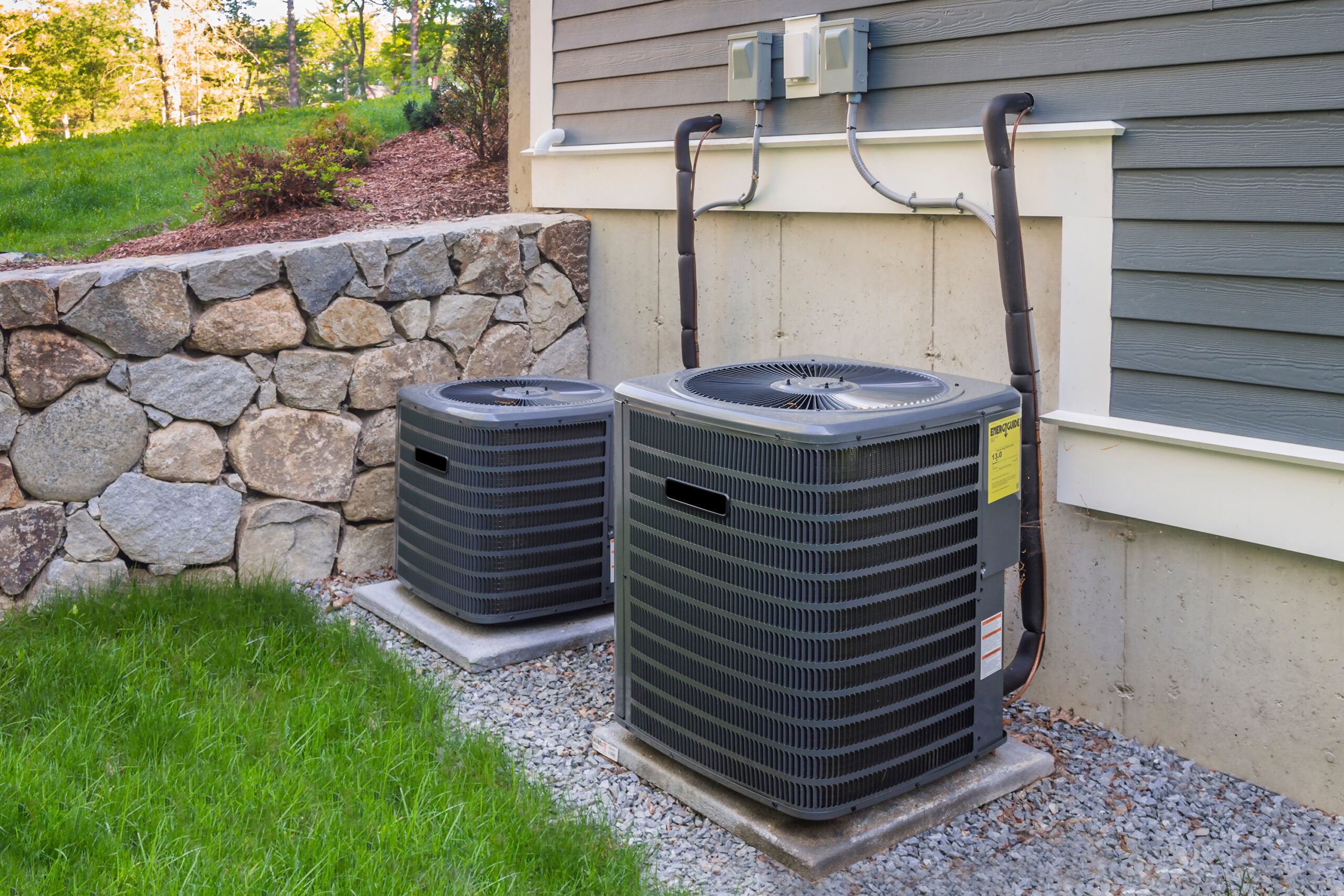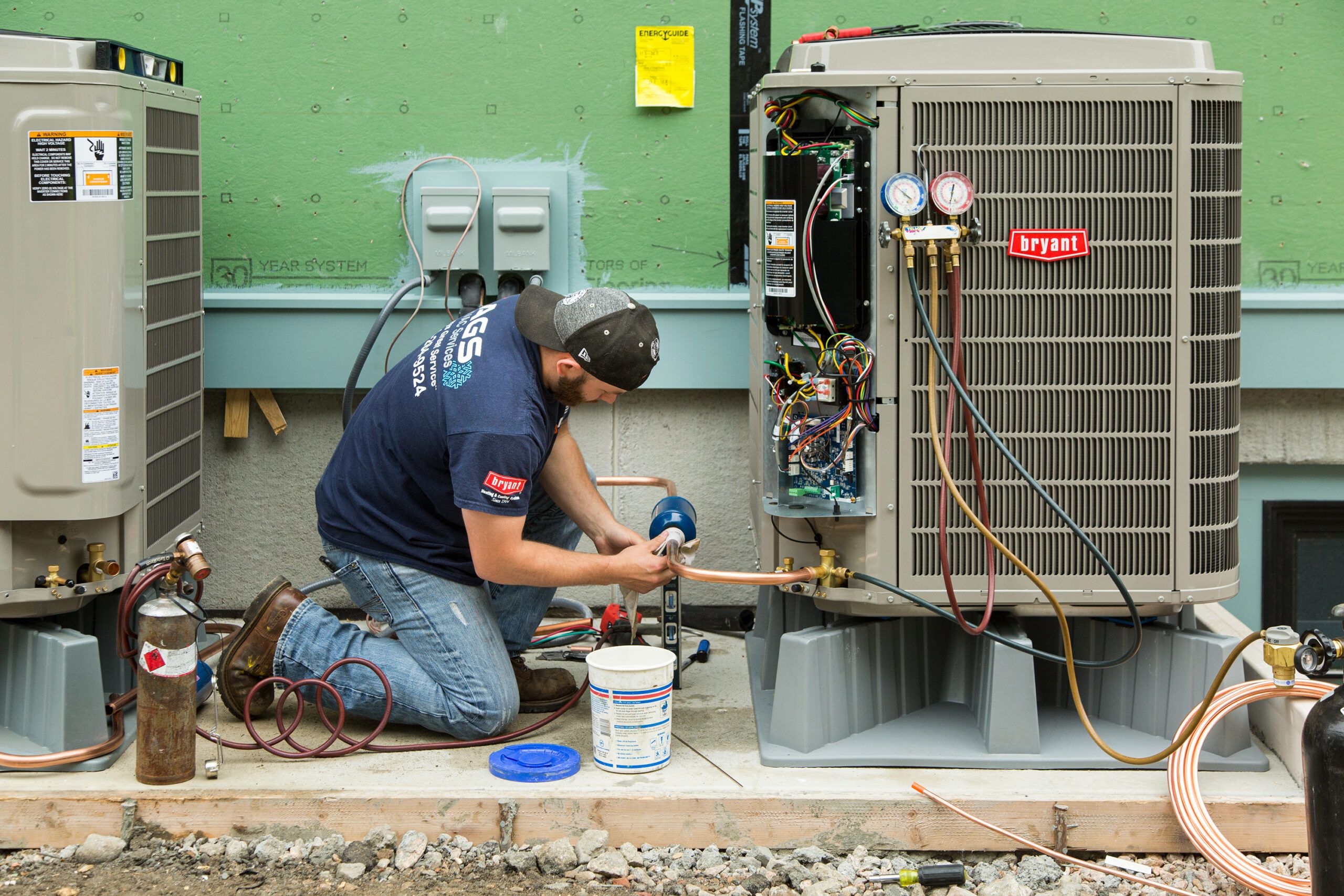Tired of feeling hot and sweaty indoors during the warmer months? Consider installing central air conditioning (AC) for a more comfortable living environment. Central AC keeps the temperature steady throughout your home and helps purify and reduce humidity in the air. Since this is a significant project, we’ll walk you through the components, costs, and steps involved for a successful installation.
Types of Central Air Systems
Central AC systems cool your home by circulating air through a network of ducts. There are two primary types of central AC: split systems and packaged units. Each has advantages and disadvantages.
Split AC Systems
A split AC system has separate indoor and outdoor units. The indoor unit contains the evaporator coil and the air handler, while the outdoor unit houses the compressor and condenser coil. Split systems are popular for their efficiency and customizable installation. However, they may require more space and can be challenging to install in homes without existing ductwork.
Packaged AC Systems
Packaged units combine all components in a single outdoor unit. This compact design is ideal for homes with limited indoor space. Packaged units are generally easier to install but might be less efficient and harder to service than split systems.
Components of a Central AC System
Central AC systems rely on several key components to function. Each part plays a specific role.
- Compressor: The compressor in the outdoor unit increases the refrigerant’s pressure and temperature to facilitate heat exchange.
- Condenser: The condenser coil, also in the outdoor unit, releases the absorbed heat from the refrigerant into the outside air.
- Ductwork: This system of ducts distributes cooled air to different rooms and returns warm air to the system to be cooled again. You need proper ductwork for efficient airflow and consistent cooling.
- Evaporator coil: The evaporator coil, found in the indoor unit, absorbs heat from the indoor air, cooling it down before it’s circulated throughout the home.
- Fan: The circulating fan moves air through your heating, ventilation, and air conditioning (HVAC) system. Learn how to install a whole house fan.
- Thermostat: The thermostat regulates temperature by controlling the entire system to maintain your desired setting.
Assessing Your Home’s Cooling Needs
Your central AC’s performance hinges on determining the appropriate size and type of unit for your home. Proper sizing ensures that your system can handle your home’s cooling needs without overworking, leading to higher efficiency and longer system life.
Calculating Heat Gain
To accurately size your central AC unit, a contractor will complete an Air Conditioning Contractors of America Manual J load calculation. This process calculates your home’s heat gain and considers factors such as insulation levels, window types and orientations, and the number of occupants. We recommend avoiding contractors who claim to be able to size your AC system without this calculation.
Determining the Appropriate Unit Size AC Unit
Central AC units are rated by tonnage and BTUs (British Thermal Units). One ton equals 12,000 BTUs, and the right size depends on your home’s heat gain calculation. Undersized units will struggle to cool your home, resulting in excessive wear and higher energy costs. Oversized units will cycle on and off frequently, meaning inefficient operation and reduced comfort.
Average Installation Costs for Central AC
The cost of installing central AC depends on your home size, unit efficiency, and other variables. On average, expect to pay between $2,500–$4,500 for the central AC unit and $3,500–$7,000 to install it.*
Additional Expenses To Consider
Besides the primary installation costs, you should account for the following expenses:
- Ductwork installation/modification: Adding or modifying ductwork increases the overall cost. Depending on the complexity, air duct replacement costs range from $250–$12,000.
- Electrical upgrades: Installing central air may require upgrades to your home’s electrical system, which can cost thousands of dollars.
- Permits and inspections: Local building codes often require permits and inspections for HVAC installations. Permit fees vary depending on your location.
*Cost information is based on 2024 reports from Angi.
Selecting the Best Central Air Unit for Your Home

When selecting the best unit for your home, consider these important factors for maximum efficiency and comfort.
Energy Efficiency Ratings
One of the most important aspects to consider is the SEER (Seasonal Energy Efficiency Ratio) rating. The SEER measures the cooling output divided by the energy consumed over a typical cooling season.
Federal law requires new central ACs to have a SEER of at least 13. Units with higher SEER ratings are more efficient and can lower energy bills. Investing in a high-efficiency unit can provide long-term savings despite the higher initial cost.
Modern Air Conditioning Features
Modern central AC units come with various features that enhance performance and convenience, such as the following:
- Noise reduction features: Some units include features designed to minimize operational noise, ensuring a quieter and more pleasant indoor environment.
- Smart thermostats: Smart thermostats allow you to control your system remotely and optimize energy usage, often resulting in reduced energy bills.
- Variable-speed compressors: These compressors adjust the cooling output based on your home’s needs, providing better comfort and energy efficiency.
Preparing Your Home for Central Air Installation
Prepping your home for central air installation streamlines the process and helps avoid potential issues.
Evaluating Existing Ductwork
Inspect any existing ductwork for any potential problems. Common issues include leaks, blockages, or inadequate insulation, which can reduce efficiency and performance. Address these issues before AC installation to ensure optimal airflow and cooling efficiency.
Planning for New Ductwork Installation
You may need to install new ductwork if your home doesn’t have any. This process can be invasive and requires planning to minimize disruption. Consider factors such as the ducts’ location, the materials used, and your home’s layout for a smooth installation.
Choosing an Installation Location
Select an appropriate location for the indoor and outdoor units. The outdoor unit’s placement significantly impacts efficiency. The condenser unit should be located in a shaded area with adequate airflow. Avoid placing it near obstructions such as walls or fences, as this can restrict airflow and reduce performance. You may also want to avoid placing the unit near doors or windows to reduce the noise inside your home.
Obtaining Necessary Permits
You or your contractor should secure all required permits before starting the installation.
The Central Air Installation Process
Installing a central AC system involves several steps, each crucial for ensuring your new system operates efficiently and effectively. On installation day, the process typically follows a structured timeline:
- Site preparation: The technicians will prepare the installation site, ensuring it’s safe and ready for work.
- Indoor and outdoor installation: The technicians will install the indoor and outdoor units in their respective locations.
- Refrigerant lines and ductwork connection: Workers connect the units using refrigerant lines and ductwork to ensure proper airflow and heat exchange.
- Electrical connections and testing: Technicians make electrical connections and test all system functions.
- Final inspection: Workers conduct a final inspection to verify the successful installation before cleaning up the work area.
Working With Existing HVAC Systems
Adding a central air system is more straightforward in homes with existing forced-air furnaces. Technicians can often use existing ductwork, meaning less extensive modifications. Workers may still need to make updates to test that the ductwork can handle the increased airflow needed for cooling.
Solutions for Homes Without Ductwork
There are alternative options for installing central AC in homes without ductwork:
- Ductless mini-split systems: These systems consist of an outdoor compressor and one or more indoor air handling units. Because refrigerant lines connect the units, there’s no need for ducts. The best ductless mini-split systems are both efficient and flexible. Read our guide on some things you should know before you buy ductless AC.
- High-velocity systems: High-velocity systems use small, flexible tubes to deliver cooled air at high speeds. These systems are easier to install in older homes with limited space for traditional ductwork.
Maximizing Efficiency of Your New Central Air System
You’ll need to maintain your AC to ensure it stays working efficiently. We recommend the following steps:
- Annual professional inspections: Schedule annual professional inspections to check for potential issues and perform necessary maintenance.
- Keep outdoor units clean: Keep the area around the outdoor unit free of debris and vegetation for proper airflow and operation.
- Regular filter changes: Replace air filters regularly for optimal airflow and air quality. You should change your air filters every three months, or per the manufacturer’s instructions.

